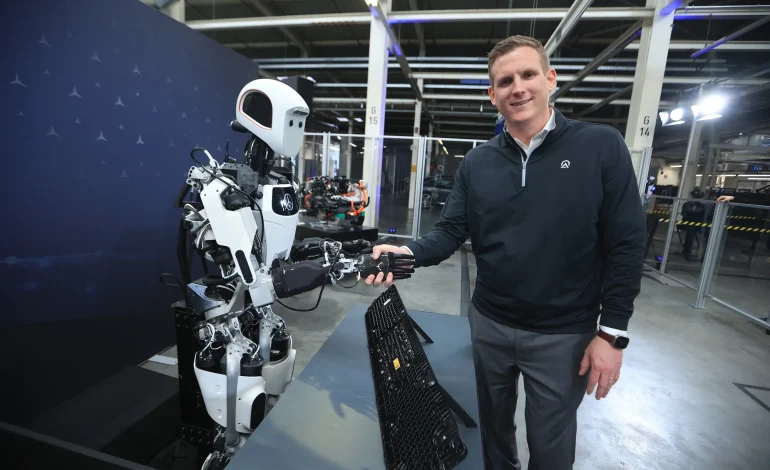Just days after tech firms showcased their latest humanoid robots to a bipartisan group of lawmakers on Capitol Hill, President Donald Trump unveiled sweeping tariffs that threaten to derail US progress in robotics, particularly in the burgeoning field of humanoid robot, Bloomberg reports.
The event, organized by the House Select Committee on the Chinese Communist Party, aimed to demonstrate American technological prowess and mobilize the US to compete with China in this emerging technological battleground. However, Trump’s tariffs, primarily targeting China, could inadvertently undermine this effort.
Humanoid robots, which mimic human appearance and movement, require a complex array of components, including specialized actuators, sensory systems, and computing chips. According to a recent analysis by Bank of America, many of these critical parts are manufactured in China, the country facing the steepest import levies.
Analysts highlight that actuators, which constitute over 50% of a robot’s total materials, often contain frameless torque motors, planetary roller screws, and precision bearings produced in China. Similarly, the report found that four out of the five major suppliers of humanoid robot vision systems – which can cost thousands of dollars – are Chinese companies.
Apptronik, a US-based robot assembler, acknowledges its reliance on some materials from China, although it declined to specify which components. The company stated, “Right now it’s uncertain for a lot of us. We’re trying to understand the landscape, but it’s changing by the day.”
While Trump has granted a temporary reprieve to many countries, the White House is maintaining a 145% levy on imports from China. Despite the administration’s recent announcement of exemptions for some popular electronics from the China tariffs, the impact on robotics companies remains unclear. “It’s hard to say” if the exemptions will help robotics companies, said Jeff Burnstein, president of the Association for Advancing Automation, a trade group representing more than 1,000 robotics firms across North America.
The uncertainty surrounding the tariffs risks hindering the US’s ability to take the lead in the robot race.
“Some companies tell me they want to bring manufacturing back to the US, but we don’t even have suppliers that sell some of these components. And if we do, they’re so much costlier,” Burnstein said. “If the cost of these parts skyrockets, it’s going to slow our ability to compete.”
Unlike the US-China rivalry over artificial intelligence, China already possesses a competitive advantage in robotics. The Chinese government has actively promoted innovation in the sector, recognizing robotics as a critical component of its “Made in China 2025” manufacturing initiative. This government support, coupled with the country’s robust supply chain, has fostered a growing number of Chinese companies developing humanoids capable of performing complex tasks like Kung Fu and running half marathons.










The latest news in your social feeds
Subscribe to our social media platforms to stay tuned